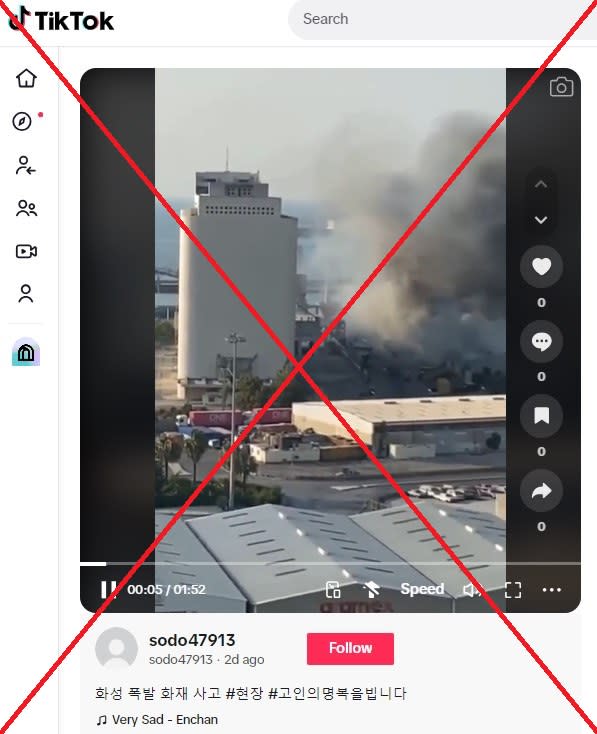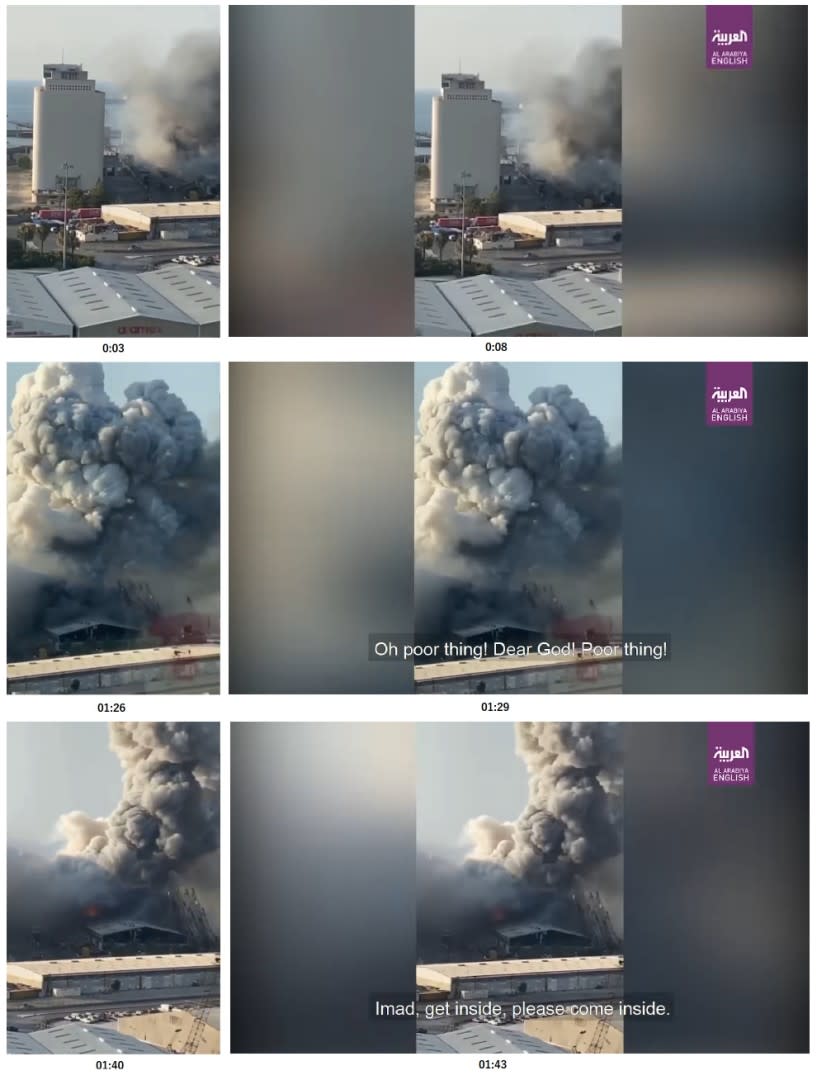Old video shows explosion in Beirut in 2020, not South Korean factory fire
An old clip of the catastrophic explosion that devastated Lebanon's capital Beirut has resurfaced in social media posts that falsely claimed it showed a fire at a lithium battery plant in South Korea that killed 23 people in June 2024. The clip of the Lebanese port blast predates the factory fire in Hwaseong by nearly four years and was used in multiple news reports.
"Hwaseong explosion and fire accident," read the caption to a TikTok video shared on June 24, 2024.
The clip appears to show black smoke billowing from a warehouse near the waterfront before there is a large explosion.
It was shared hours after a major fire broke out in a lithium battery plant in Hwaseong, just south of South Korea's capital Seoul. The fire killed 23 employees -- mostly foreign nationals -- in one of the country's worst factory disasters in years.
While an investigation was pending, authorities suspected the fire was caused by overheating lithium batteries, which caused a chain reaction (archived link).
Three factory operators were booked by police for allegedly violating industrial safety laws.

The video was shared alongside similar claims on YouTube as well as on South Korean forums DC Inside and FM Korea.
But the clip is unrelated to the Hwaseong factory fire. It previously circulated in news reports about a deadly explosion in Lebanon in August 2020.
Beirut video
A combination of reverse image and keyword searches on Google and YouTube found the video corresponds to footage published by Al Arabiya on YouTube on August 10, 2020, days after a massive blast at Beirut's port destroyed swathes of the Lebanese capital (archived link).
The blast killed more than 220 people and injured at least 6,500, AFP reported.
Authorities said the explosion was triggered by a fire in a warehouse where a vast stockpile of the industrial chemical ammonium nitrate had been haphazardly stored for years.
Below is a screenshot comparison between the clip shared in the misleading post (left) and the video published by Al Arabiya (right):

The clip published by Al Arabiya includes audio of a couple speaking in Arabic as they watch the fire.
Arabic-language signs for the Emirati logistics company Aramex can also be seen on warehouses in the video (archived link).
A CNN report from August 2020 that also featured the clip said it had been filmed by Imad Khalil and Lina Alameh, a couple who witnessed the blast from their apartment near the port (archived link).
Both were severely injured in the blast and their flat was almost destroyed, the report said.
Footage of the Beirut blast taken from other angles was widely published in international news reports at the time, including by DW News and Euronews (archived links here and here).
While many of the buildings seen in the video were damaged or destroyed, AFP was able to geolocate the approximate location of the footage to the port of Beirut on Google Maps (archived link).
Below is a screenshot comparison between scenes from the footage shared on TikTok (left and centre) and a corresponding location shown on Google Maps' Street View (right), with matching features highlighted by AFP:

AFP has previously debunked misinformation relying on footage of the Beirut explosion here, here and here.

 Yahoo News
Yahoo News 
